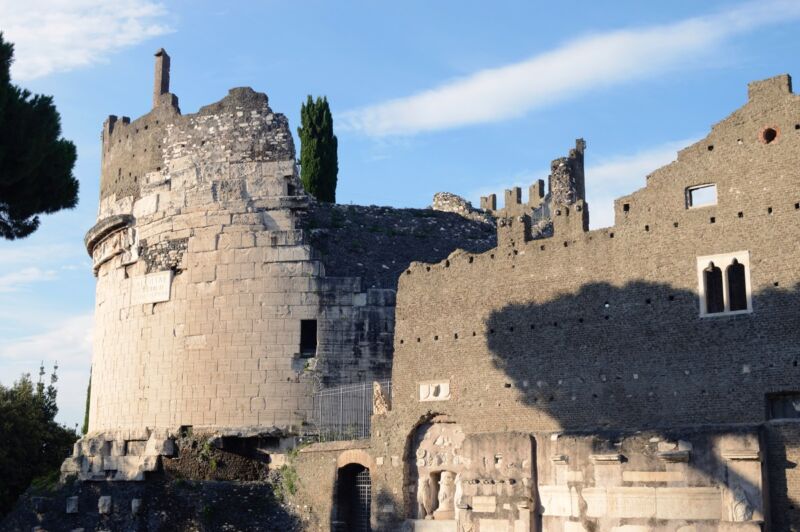
Kohler has smart home kitchen and bath products for the lazy, like the Kohler Stillness Bath and the bathtub filler.Read More

Kohler has smart home kitchen and bath products for the lazy, like the Kohler Stillness Bath and the bathtub filler.Read More

Samsung Electronics has unveiled the Samsung Gaming Hub as a new way to play and discover cloud-based games on Samsung smart TVs.Read More

Datasets are huge, constantly expanding and they can change in real-time. Learn what MLOps engineers should focus on for business success.Read More

(credit: Samsung)
4K has saturated the TV market, but the sharpest mainstream display resolution is not as common in PC monitors, due to price and limitations. PC gamers specifically opt for PC monitors because they can generally hit higher refresh rates than TVs, which are typically at 60 Hz or 120 Hz, making fast-paced gaming action look smoother. But refresh rates higher than 144 Hz usually require sticking to QHD resolution or lower. Samsung’s introduction today of a 4K monitor that can hit 240 Hz changes that.
Samsung told me it will announce the price and release date for the monitor, part of the brand’s announcements for CES 2022, “later this year.” If it arrives in 2022, it should be the fastest 4K monitor on the market—assuming another brand doesn’t announce a similar screen (who knows what else we’ll hear about at CES; the tech show doesn’t even officially start until Wednesday).
The Odyssey Neo G8 has a 1 ms GTG response time and is able to refresh 8,294,400 pixels 240 times per second. When asked, Samsung didn’t specify if the monitor uses compression to do so, but it apparently does because its port selection is comprised of two HDMI 2.1 and one DisplayPort 1.4.

The explosive growth of big data analytics will help businesses generate industry-leading personalized experiences through the next 5 years. Read More

Enlarge / This electromechanical machine, used in the 1890 U.S. census, was the first automated data processing system. (credit: Michael Hicks (CC BY 2.0))
The US Constitution requires that a population count be conducted at the beginning of every decade.
This census has always been charged with political significance, and continues to be. That’s clear from the controversies in the run-up to the 2020 census.
But it’s less widely known how important the census has been in developing the US computer industry, a story that I tell in my book, Republic of Numbers: Unexpected Stories of Mathematical Americans through History. That history includes the founding of the first automated data processing company, the Tabulating Machine Company, 125 years ago on December 3, 1896.
Peacemaker explores the continuing story of the character that John Cena reprises from James Gunn’s 2021 film The Suicide Squad.
It’s a brand new year, and HBO Max has kicked it off with a shiny new red-band trailer for Peacemaker.
As we’ve reported previously, the eight-episode spinoff series is set after the events of Gunn’s 2021 filmm The Suicide Squad—specifically after the post-credits scene, in which we learned that Peacemaker had survived what had appeared to be a fatal shooting. The first teaser dropped in October, showing Peacemaker (aka Christopher Smith) being recruited by Clemson Murn (Chukwudi Iwuji) for another mission in order to avoid going back to prison.
Once again, he’s basically an assassin, but at least he’s only killing bad people (maybe). He gets assistance from warden John Economos (Steve Agee) of the Belle Reve penitentiary, NSA agent and former Waller aide Emilia Harcourt (Jennifer Holland), and new team member Leota Adebayo (Danielle Brooks). The cast also includes Robert Patrick (Terminator 2) as Peacemaker’s crusty father, Auggie Smith, who thinks his son is a “nancy-boy”; Freddie Stroma as Adrian Chase (aka Vigilante), a district attorney who fights crime and has rapid-healing abilities; and Nhut Le as Judomaster.

Enlarge / The Tomb of Caecilia Metella is a mausoleum located just outside Rome at the three mile marker of the Via Appia. (credit: ivioandronico2013/CC BY-SA 4.0)
Among the many popular tourist sites in Rome is an impressive 2000-year-old mausoleum along the Via Appia known as the Tomb of Caecilia Metella, a noblewoman who lived in the first century CE. Lord Byron was among those who marveled at the structure, even referencing it in his epic poem Childe Harold’s Pilgrimage (1812-1818). Now scientists have analyzed samples of the ancient concrete used to build the tomb, describing their findings in a paper published in October in the Journal of the American Ceramic Society.
“The construction of this very innovative and robust monument and landmark on the Via Appia Antica indicates that [Caecilia Metella] was held in high respect,” said co-author Marie Jackson, a geophysicist at the University of Utah. “And the concrete fabric 2,050 years later reflects a strong and resilient presence.”
Like today’s Portland cement (a basic ingredient of modern concrete), ancient Roman concrete was basically a mix of a semi-liquid mortar and aggregate. Portland cement is typically made by heating limestone and clay (as well as sandstone, ash, chalk, and iron) in a kiln. The resulting clinker is then ground into a fine powder, with just a touch of added gypsum—the better to achieve a smooth, flat surface. But the aggregate used to make Roman concrete was made up fist-size pieces of stone or bricks

It’s more important than ever that orgs shift their investment strategies to focus on ransomware protection designed for modern networks.Read More

Data lakehouse architecture combines the best of cloud data lake and warehousing architectures to give teams the most recent data. Read More